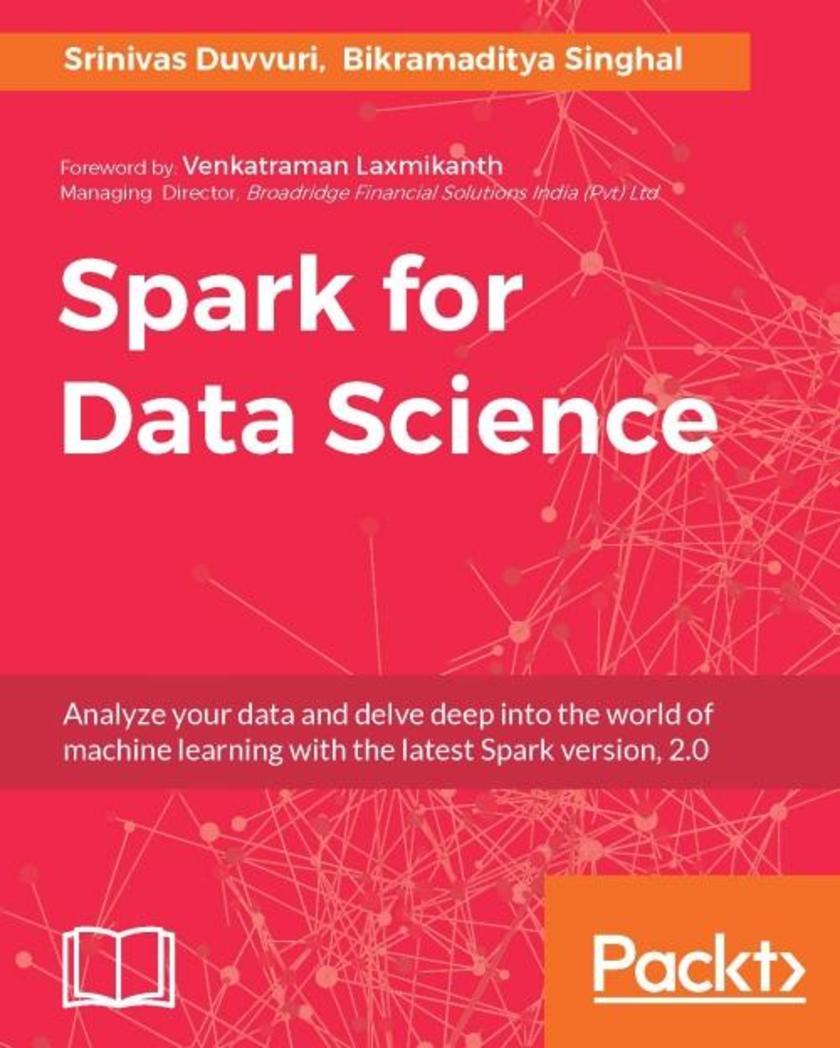
Spark for Data Science
¥90.46
Analyze your data and delve deep into the world of machine learning with the latest Spark version, 2.0 About This Book Perform data analysis and build predictive models on huge datasets that leverage Apache Spark Learn to integrate data science algorithms and techniques with the fast and scalable computing features of Spark to address big data challenges Work through practical examples on real-world problems with sample code snippets Who This Book Is For This book is for anyone who wants to leverage Apache Spark for data science and machine learning. If you are a technologist who wants to expand your knowledge to perform data science operations in Spark, or a data scientist who wants to understand how algorithms are implemented in Spark, or a newbie with minimal development experience who wants to learn about Big Data Analytics, this book is for you! What You Will Learn Consolidate, clean, and transform your data acquired from various data sources Perform statistical analysis of data to find hidden insights Explore graphical techniques to see what your data looks like Use machine learning techniques to build predictive models Build scalable data products and solutions Start programming using the RDD, DataFrame and Dataset APIs Become an expert by improving your data analytical skills In Detail This is the era of Big Data. The words ‘Big Data’ implies big innovation and enables a competitive advantage for businesses. Apache Spark was designed to perform Big Data analytics at scale, and so Spark is equipped with the necessary algorithms and supports multiple programming languages. Whether you are a technologist, a data scientist, or a beginner to Big Data analytics, this book will provide you with all the skills necessary to perform statistical data analysis, data visualization, predictive modeling, and build scalable data products or solutions using Python, Scala, and R. With ample case studies and real-world examples, Spark for Data Science will help you ensure the successful execution of your data science projects. Style and approach This book takes a step-by-step approach to statistical analysis and machine learning, and is explained in a conversational and easy-to-follow style. Each topic is explained sequentially with a focus on the fundamentals as well as the advanced concepts of algorithms and techniques. Real-world examples with sample code snippets are also included.
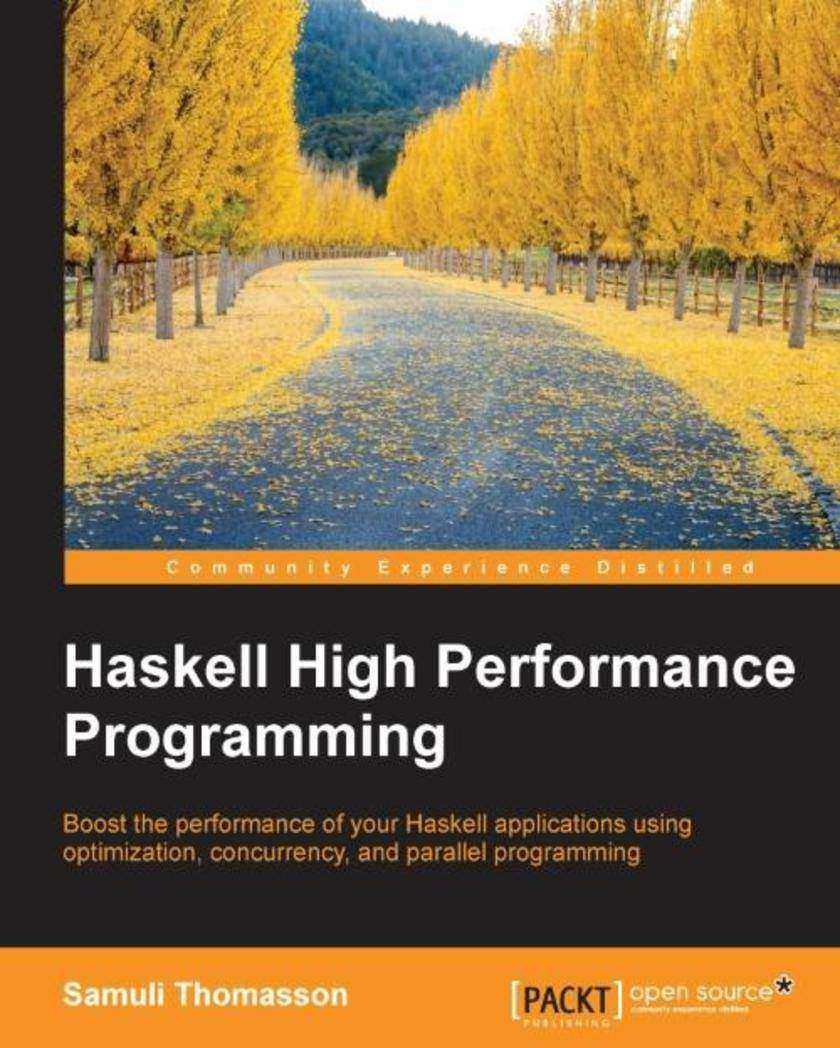
Haskell High Performance Programming
¥90.46
Boost the performance of your Haskell applications using optimization, concurrency, and parallel programming About This Book Explore the benefits of lazy evaluation, compiler features, and tools and libraries designed for high performance Write fast programs at extremely high levels of abstraction Work through practical examples that will help you address the challenges of writing efficient code Who This Book Is For To get the most out of this book, you need to have a working knowledge of reading and writing basic Haskell. No knowledge of performance, optimization, or concurrency is required. What You Will Learn Program idiomatic Haskell that's also surprisingly efficient Improve performance of your code with data parallelism, inlining, and strictness annotations Profile your programs to identify space leaks and missed opportunities for optimization Find out how to choose the most efficient data and control structures Optimize the Glasgow Haskell Compiler and runtime system for specific programs See how to smoothly drop to lower abstractions wherever necessary Execute programming for the GPU with Accelerate Implement programming to easily scale to the cloud with Cloud Haskell In Detail Haskell, with its power to optimize the code and its high performance, is a natural candidate for high performance programming. It is especially well suited to stacking abstractions high with a relatively low performance cost. This book addresses the challenges of writing efficient code with lazy evaluation and techniques often used to optimize the performance of Haskell programs. We open with an in-depth look at the evaluation of Haskell expressions and discuss optimization and benchmarking. You will learn to use parallelism and we'll explore the concept of streaming. We’ll demonstrate the benefits of running multithreaded and concurrent applications. Next we’ll guide you through various profiling tools that will help you identify performance issues in your program. We’ll end our journey by looking at GPGPU, Cloud and Functional Reactive Programming in Haskell. At the very end there is a catalogue of robust library recommendations with code samples. By the end of the book, you will be able to boost the performance of any app and prepare it to stand up to real-world punishment. Style and approach This easy-to-follow guide teaches new practices and techniques to optimize your code, and then moves towards more advanced ways to effectively write efficient Haskell code. Small and simple practical examples will help you test the concepts yourself, and you will be able to easily adapt them for any application.
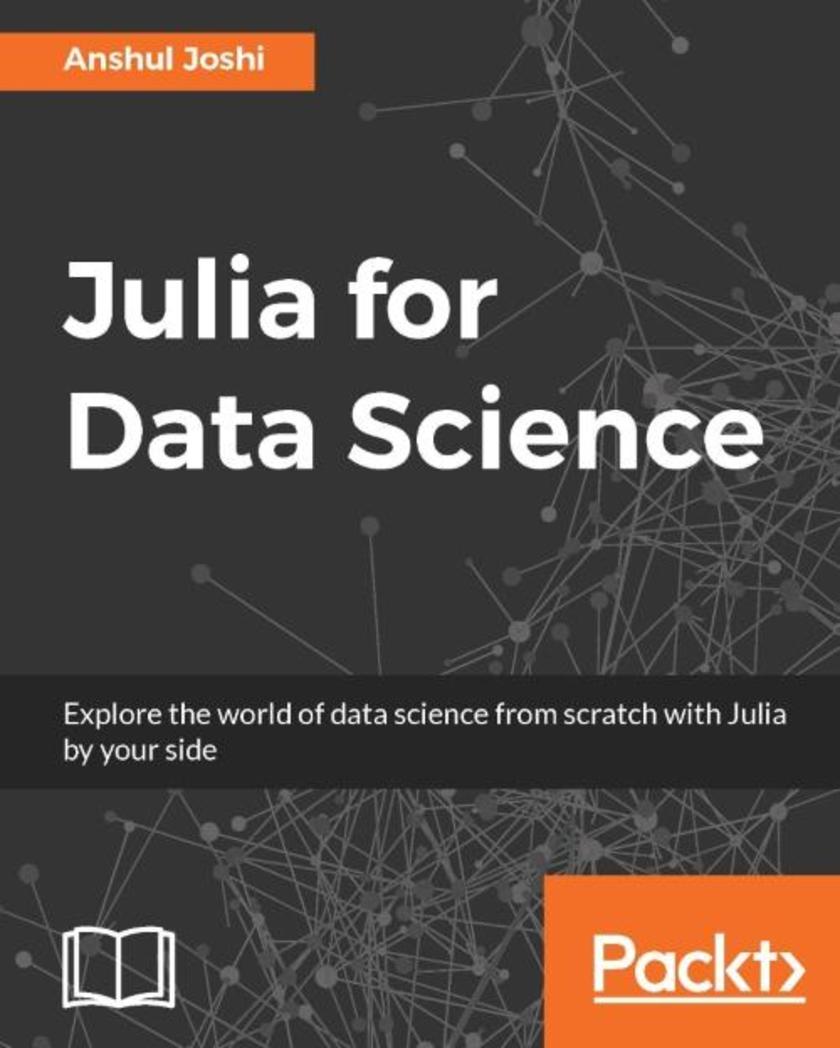
Julia for Data Science
¥90.46
Explore the world of data science from scratch with Julia by your side About This Book An in-depth exploration of Julia's growing ecosystem of packages Work with the most powerful open-source libraries for deep learning, data wrangling, and data visualization Learn about deep learning using Mocha.jl and give speed and high performance to data analysis on large data sets Who This Book Is For This book is aimed at data analysts and aspiring data scientists who have a basic knowledge of Julia or are completely new to it. The book also appeals to those competent in R and Python and wish to adopt Julia to improve their skills set in Data Science. It would be beneficial if the readers have a good background in statistics and computational mathematics. What You Will Learn Apply statistical models in Julia for data-driven decisions Understanding the process of data munging and data preparation using Julia Explore techniques to visualize data using Julia and D3 based packages Using Julia to create self-learning systems using cutting edge machine learning algorithms Create supervised and unsupervised machine learning systems using Julia. Also, explore ensemble models Build a recommendation engine in Julia Dive into Julia’s deep learning framework and build a system using Mocha.jl In Detail Julia is a fast and high performing language that's perfectly suited to data science with a mature package ecosystem and is now feature complete. It is a good tool for a data science practitioner. There was a famous post at Harvard Business Review that Data Scientist is the sexiest job of the 21st century. (https://hbr.org/2012/10/data-scientist-the-sexiest-job-of-the-21st-century). This book will help you get familiarised with Julia's rich ecosystem, which is continuously evolving, allowing you to stay on top of your game. This book contains the essentials of data science and gives a high-level overview of advanced statistics and techniques. You will dive in and will work on generating insights by performing inferential statistics, and will reveal hidden patterns and trends using data mining. This has the practical coverage of statistics and machine learning. You will develop knowledge to build statistical models and machine learning systems in Julia with attractive visualizations. You will then delve into the world of Deep learning in Julia and will understand the framework, Mocha.jl with which you can create artificial neural networks and implement deep learning. This book addresses the challenges of real-world data science problems, including data cleaning, data preparation, inferential statistics, statistical modeling, building high-performance machine learning systems and creating effective visualizations using Julia. Style and approach This practical and easy-to-follow yet comprehensive guide will get you learning about Julia with respect to data science. Each topic is explained thoroughly and placed in context. For the more inquisitive, we dive deeper into the language and its use case. This is the one true guide to working with Julia in data science.
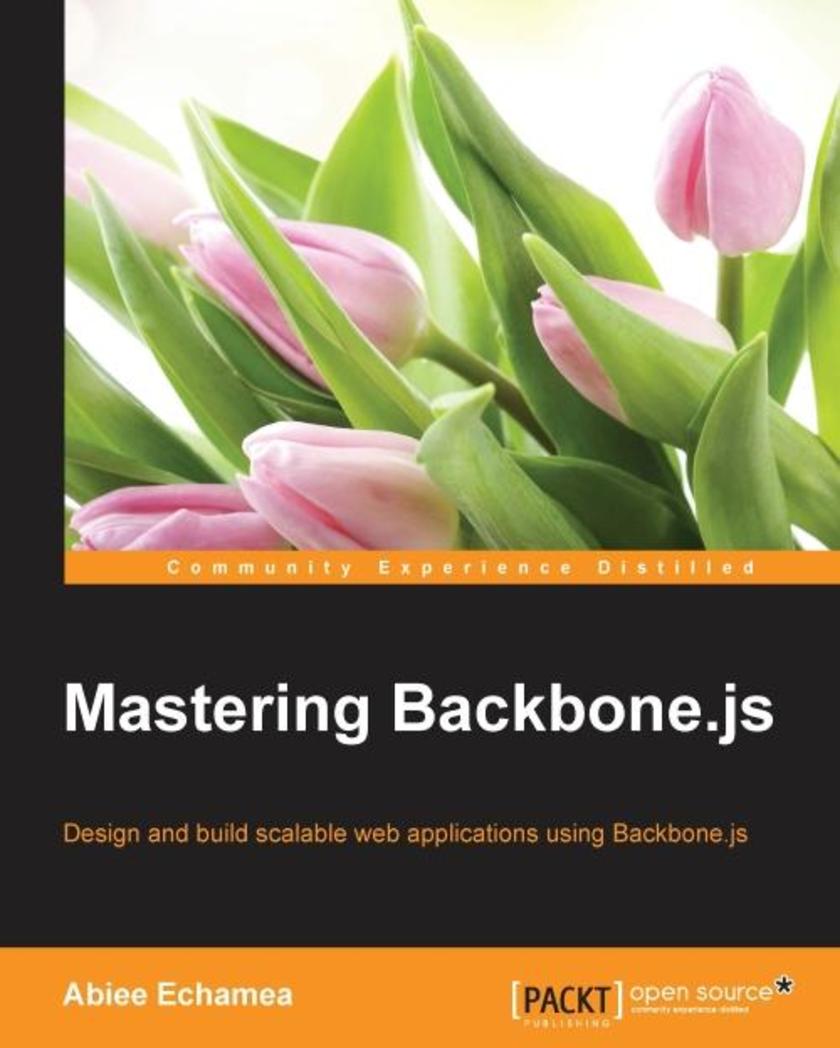
Mastering Backbone.js
¥90.46
Design and build scalable web applications using Backbone.jsAbout This BookLevel up your Backbone.js skills and create professional web applications with the best practicesUse the Backbone.js components in the right way and avoid maintenance nightmaresImprove your development workflow from application design to deploymentApply the best practices given in this tutorial to solve day-to-day problems in your applicationsWho This Book Is ForThis book is for those developers who know the basic concepts of Backbone.js and want to build scalable applications with it. If you are looking for the best practices of using Backbone.js applied to real work applications, this book is for you. You will be able to apply architectural principles to create amazing web applications easily.What You Will LearnBuild web applications that scale with Backbone.jsDesign a powerful architecture that eliminates maintenance nightmaresUse common patterns and best practices in Backbone.js web applications developmentsPack your applications to be deployed to production environmentsClean up your code organization to a simple and maintainable architectureTest your components and get confidence with your codeDeal with common scenarios like file uploading and login issuesIn DetailBackbone.js is a popular library to build single page applications used by many start-ups around the world because of its flexibility, robustness and simplicity. It allows you to bring your own tools and libraries to make amazing webapps with your own rules. However, due to its flexibility it is not always easy to create scalable applications with it. By learning the best practices and project organization you will be able to create maintainable and scalable web applications with Backbone.js.With this book you will start right from organizing your Backbone.js application to learn where to put each module and how to wire them. From organizing your code in a logical and physical way, you will go on to delimit view responsibilities and work with complex layouts.Synchronizing models in a two-way binding can be difficult and with sub resources attached it can be even worse. The next chapter will explain strategies for how to deal with these models. The following chapters will help you to manage module dependencies on your projects, explore strategies to upload files to a RESTful API and store information directly in the browser for using it with Backbone.js. After testing your application, you are ready to deploy it to your production environment. The final chapter will cover different flavors of authorization.The Backbone.js library can be difficult to master, but in this book you will get the necessary skill set to create applications with it, and you will be able to use any other library you want in your stack.Style and approachThis book takes a tutorial approach to help you scale your Backbone.js applications. It builds a web application using the best practices and applies architectural design principles to develop maintainable web-apps. Each chapter explains the design decisions and improves the project that is used as an example alongside the book.

Mastering QlikView Data Visualization
¥90.46
Take your QlikView skills to the next level and master the art of creating visual data analysis for real business needs About This Book Explore how to create your own QlikView data laboratory and how to develop QlikView applications using agile project methods Implement advanced data visualization and analysis for common business requirements from the sales, finance, marketing, inventory, operations, and human resources departments Learn from real-life experience shared in this book that will give you the upper hand in your next QlikView project Who This Book Is For This book is intended for developers who want to go beyond their technical knowledge of QlikView and understand how to create analysis and data visualizations that solve real business needs. You should have a basic understanding of advanced QlikView functions. What You Will Learn Apply advanced QlikView techniques such as set analysis and nested aggregation in order to deliver common business requirements Understand real business requirements for sales, finance, marketing, and human resources departments Discover when to apply more advanced data visualization such as frequency polygons, bullet graphs, and XmR charts Go beyond native QlikView and include geographical analysis, planning, and sentiment analysis in your QlikView application Troubleshoot common errors we discover at the moment we visualize data in QlikView Develop a plan to master Qlik Sense data visualization In Detail Just because you know how to swing a hammer doesn't mean you know how to build a house. Now that you've learned how to use QlikView, it's time to learn how to develop meaningful QlikView applications that deliver what your business users need. You will explore the requirements and the data from several business departments in order to deliver the most amazing analysis and data visualizations. In doing so, you will practice using advanced QlikView functions, chart object property options, and extensions to solve real-world challenges. Style and approach This hands-on guide follows the story of a company implementing QlikView as its enterprise data discovery solution. Each chapter starts with an understanding of the business requirements and the data model, and then helps you create insightful analysis and data visualizations. Each chapter expands on what was done in the previous chapter as we follow this continuously improving iterative process.
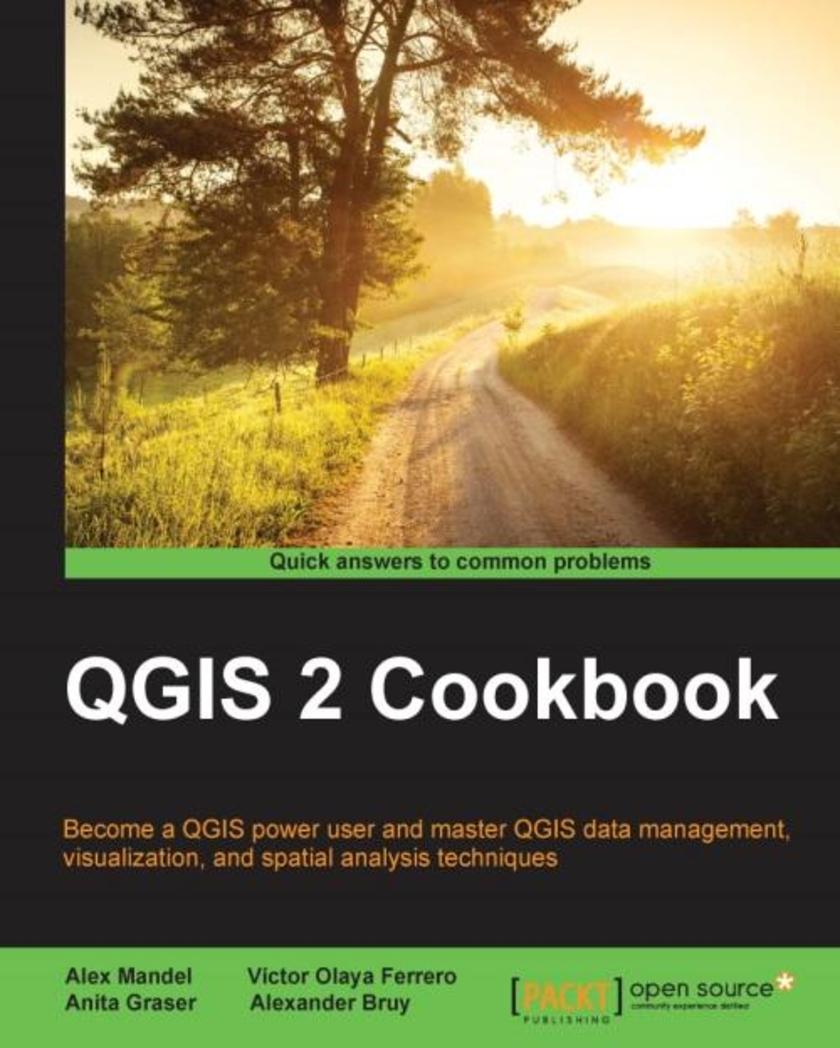
QGIS 2 Cookbook
¥90.46
Become a QGIS power user and master QGIS data management, visualization, and spatial analysis techniques About This Book Explore and create time-based visualizations and build interactive maps Maximize your use of the QGIS features, plugins and toolbox automation Packed with lots of sample datasets to enable a better understanding of the code Who This Book Is For If you are an intermediate GIS user, with either previous experience in QGIS or any other GIS application, this is the book for you. The recipes can be used to learn more advanced techniques in QGIS or to replicate the functionalities equivalent to other GIS platforms. This book assumes that you already have a working QGIS system in place. What You Will Learn Import and export common tricky spatial data formats Perform classic vector and raster analysis with QGIS Utilize spatial databases and data management tools Use and create geographic web services and maps Explore and create time-based visualizations Perform network building and routing analysis Extend QGIS capabilities with popular plugins and toolbox automation Make beautiful and unique maps with customized cartography In Detail QGIS is a user-friendly, cross-platform desktop geographic information system used to make maps and analyze spatial data. QGIS allows users to understand, question, interpret, and visualize spatial data in many ways that reveal relationships, patterns, and trends in the form of maps. This book is a collection of simple to advanced techniques that are needed in everyday geospatial work, and shows how to accomplish them with QGIS. You will begin by understanding the different types of data management techniques, as well as how data exploration works. You will then learn how to perform classic vector and raster analysis with QGIS, apart from creating time-based visualizations. Finally, you will learn how to create interactive and visually appealing maps with custom cartography. By the end of this book, you will have all the necessary knowledge to handle spatial data management, exploration, and visualization tasks in QGIS. Style and approach This book covers practical examples, with step-by-step instructions on how to use real world data covering common GIS operations and the different analysis techniques. It provides detailed explanations and applications of QGIS concepts that will allow the user to effectively analyze spatial data.
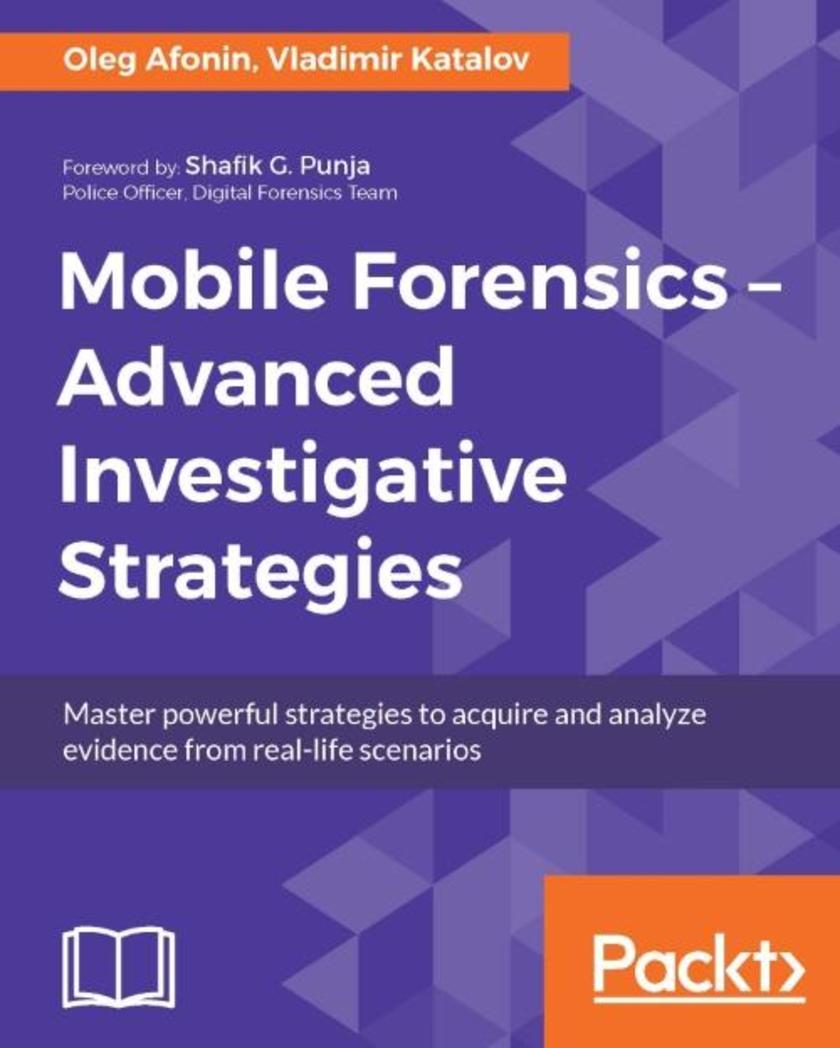
Mobile Forensics – Advanced Investigative Strategies
¥90.46
Master powerful strategies to acquire and analyze evidence from real-life scenarios About This Book A straightforward guide to address the roadblocks face when doing mobile forensics Simplify mobile forensics using the right mix of methods, techniques, and tools Get valuable advice to put you in the mindset of a forensic professional, regardless of your career level or experience Who This Book Is For This book is for forensic analysts and law enforcement and IT security officers who have to deal with digital evidence as part of their daily job. Some basic familiarity with digital forensics is assumed, but no experience with mobile forensics is required. What You Will Learn Understand the challenges of mobile forensics Grasp how to properly deal with digital evidence Explore the types of evidence available on iOS, Android, Windows, and BlackBerry mobile devices Know what forensic outcome to expect under given circumstances Deduce when and how to apply physical, logical, over-the-air, or low-level (advanced) acquisition methods Get in-depth knowledge of the different acquisition methods for all major mobile platforms Discover important mobile acquisition tools and techniques for all of the major platforms In Detail Investigating digital media is impossible without forensic tools. Dealing with complex forensic problems requires the use of dedicated tools, and even more importantly, the right strategies. In this book, you’ll learn strategies and methods to deal with information stored on smartphones and tablets and see how to put the right tools to work. We begin by helping you understand the concept of mobile devices as a source of valuable evidence. Throughout this book, you will explore strategies and "plays" and decide when to use each technique. We cover important techniques such as seizing techniques to shield the device, and acquisition techniques including physical acquisition (via a USB connection), logical acquisition via data backups, over-the-air acquisition. We also explore cloud analysis, evidence discovery and data analysis, tools for mobile forensics, and tools to help you discover and analyze evidence. By the end of the book, you will have a better understanding of the tools and methods used to deal with the challenges of acquiring, preserving, and extracting evidence stored on smartphones, tablets, and the cloud. Style and approach This book takes a unique strategy-based approach, executing them on real-world scenarios. You will be introduced to thinking in terms of "game plans," which are essential to succeeding in analyzing evidence and conducting investigations.

Web Development with Django Cookbook - Second Edition
¥90.46
Over 70 practical recipes to help you create scalable websites using the Django 1.8 frameworkAbout This BookThis is the latest book on the market that will help you take advantage of the new features added to Django 1.8This book consists of recipes of varying complexities to help you create multilingual, responsive, and scalable websites with DjangoThis updated edition teaches you major Django functions and will help you improve your skills by developing models, forms, views, and templatesWho This Book Is ForThis book is for intermediate-level and professional Django users who need to build projects that are multilingual, functional on devices of different screen sizes, and that scale over a period of time. If you have created websites with Django but you want to sharpen your knowledge and learn some good approaches to different aspects of web development, you should definitely read this book.What You Will LearnGet started with the basic configuration necessary to start any Django projectBuild a database structure out of reusable model mixinsManage forms and views and get to know some useful patterns that are used to create themCreate handy template filters and tags that you can reuse in every projectIntegrate your own functionality into the Django CMSManage hierarchical structures with MPTTImport data from local sources and external web services as well as exporting your data to third partiesImplement a multilingual search with HaystackTest and deploy your project efficientlyIn DetailDjango is a web framework that was designed to strike a balance between rapid web development and high performance. It has the capacity to handle applications with high levels of user traffic and interaction, and can integrate with massive databases on the backend, constantly collecting and processing data in real time.Through this book, you'll discover that collecting data from different sources and providing it to others in different formats isn't as difficult as you thought. It follows a task-based approach to guide you through all the web development processes using the Django framework. We’ll start by setting up the virtual environment for a Django project and configuring it. Then you’ll learn to write reusable pieces of code for your models and find out how to manage database schema changes using South migrations. After that, we’ll take you through working with forms and views to enter and list data. With practical examples on using templates and JavaScript together, you will discover how to create the best user experience. In the final chapters, you'll be introduced to some programming and debugging tricks and finally, you will be shown how to test and deploy the project to a remote dedicated server.By the end of this book, you will have a good understanding of the new features added to Django 1.8 and be an expert at web development processes.Style and approachEvery chapter consists of practical examples and a mix of basic and advanced recipes that will guide you through the entire web development process, starting from project configuration and taking you right through to deployment.
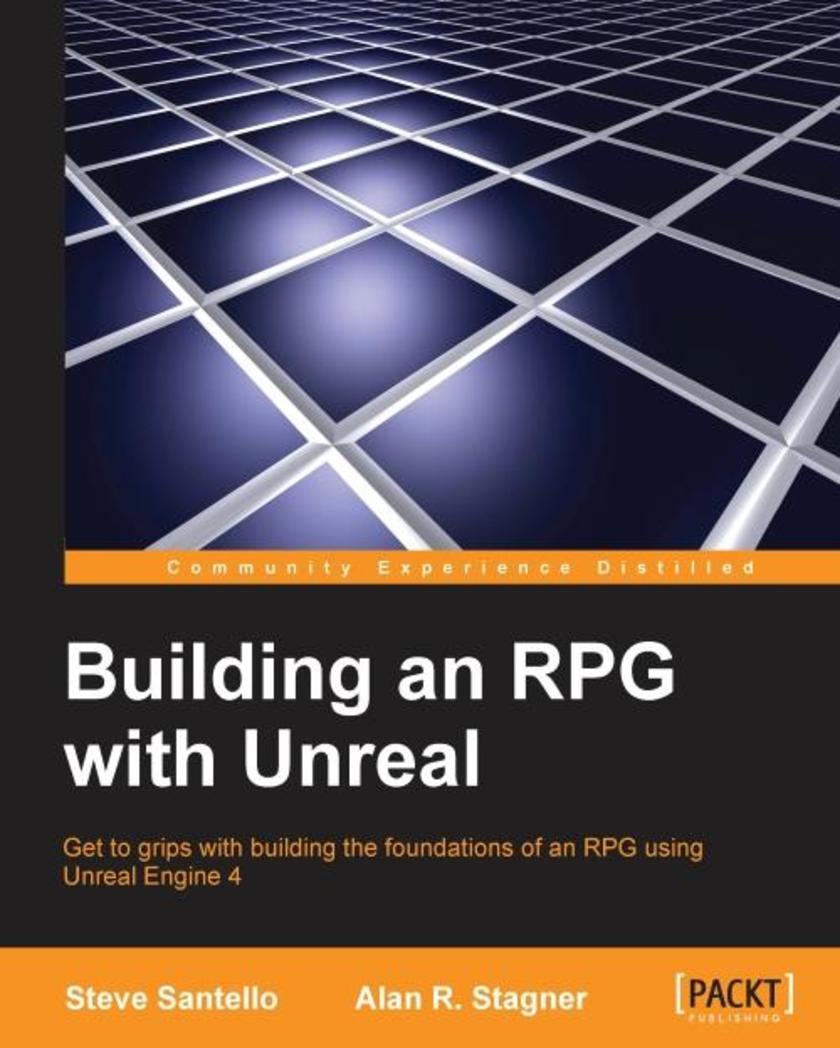
Building an RPG with Unreal
¥90.46
Get to grips with building the foundations of an RPG using Unreal Engine 4About This BookUtilize a mixture of C++, Blueprints, and UMG to create a role playing game (RPG) efficientlyCreate reusable code chunks and elements that can easily be integrated into other gamesA cost effective, step-by-step guide to building and customizing an entire framework for your RPGWho This Book Is ForIf you are new to Unreal Engine and always wanted to * an RPG, you are this book’s target reader. The lessons assume you understand the conventions of RPG games and have some awareness of the basics of using the Unreal editor to build level.What You Will LearnProgram gameplay elements in C++ in UnrealCreate custom game data for entities such as players and enemiesCreate a turn-based combat engineDesign menu systems and blueprint logicCreate an NPC and dialog systemIntegrate equipment and itemsDevelop the foundations of a saving and loading systemIn DetailNow that Unreal Engine 4 has become one of the most cutting edge game engines in the world, developers are looking for the best ways of creating games of any genre in the engine. This book will lay out the foundation of creating a turn-based RPG in Unreal Engine 4.The book starts by walking you through creating a turn-based battle system that can hold commands for party members and enemies. You’ll get your hands dirty by creating NPCs such as shop owners, and important mechanics, that make up every RPG such as a currency system, inventory, dialogue, and character statistics. Although this book specifically focuses on the creation of a turn-based RPG, there are a variety of topics that can be utilized when creating many other types of genres.By the end of the book, you will be able to build upon core RPG framework elements to create your own game experience.Style and approachYou will follow a series of lessons detailing the elements that contribute to an RPG. By the end of the book, you will have considerably leveled up your ability to make your own game
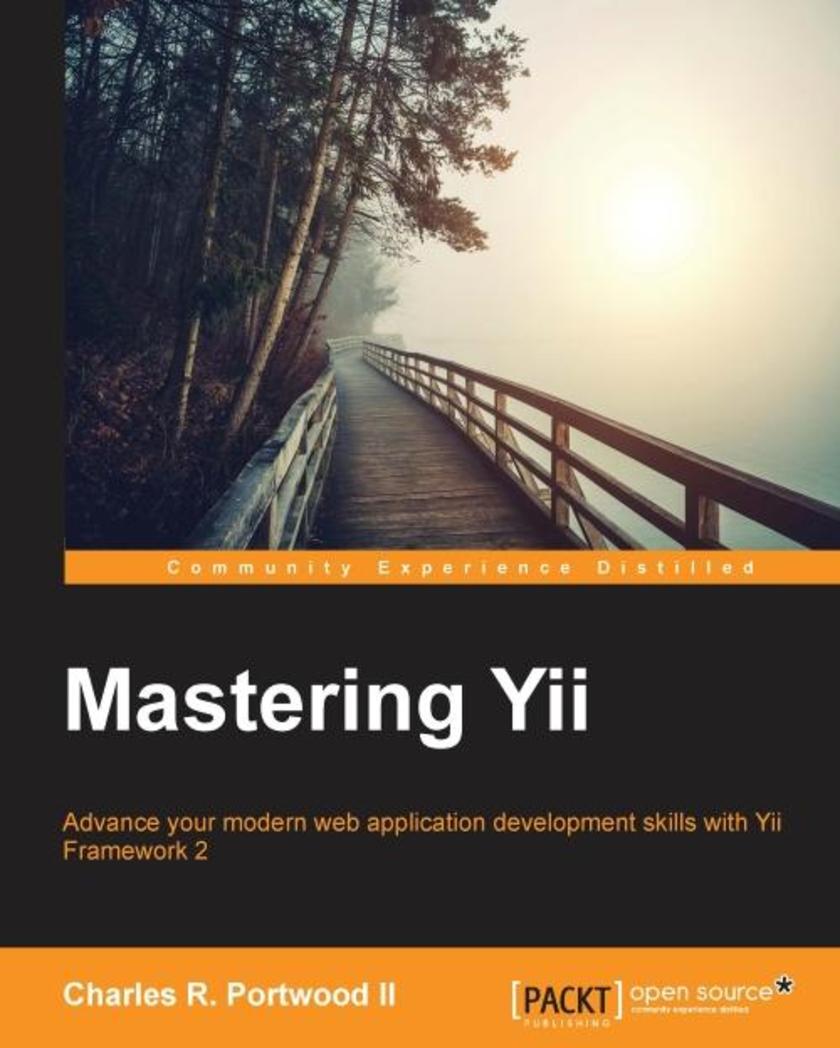
Mastering Yii
¥90.46
Advance your modern web application development skills with Yii Framework 2About This BookLearn to work with the key aspects of Yii Framework 2Explore how to create RESTful APIs with YiiIncorporate codeception with Yii2 to test your code thoroughlyWho This Book Is ForThis book is for Yii Framework developers who want to quickly master Yii2. This book assumes some familiarity with Yii2, PHP 5, and HTML5.What You Will LearnExplore Yii2’s conventions and learn how to properly configure Yii2Create both web and console applicationsReduce development time by learning to create classes automatically with Gii, Yii2’s automatic code generation toolUse Yii2’s database migration toolManage and access databases with Active Record, DAO, and Query BuilderHandle user authentication and authorization within Yii2Create RESTful APIs with Yii Framework 2Test applications automatically with codeceptionIn DetailThe successor of Yii Framework 1.1, Yii2 is a complete rewrite of Yii Framework, one of the most popular PHP 5 frameworks for making modern web applications. The update embraces the best practices and protocols established with newer versions of PHP, while still maintaining the simple, fast, and extendable behavior found in its predecessor.This book has been written to enhance your skills and knowledge with Yii Framework 2. Starting with configuration and how to initialize new projects, you’ll learn how to configure, manage, and use every aspect of Yii2 from Gii, DAO, Query Builder, Active Record, and migrations, to asset manager. You'll also discover how to automatically test your code using codeception.With this book by your side, you’ll have all the skills you need to quickly create rich modern web and console applications with Yii2.Style and approach This book is a step-by-step guide to mastering every aspect of Yii Framework 2. Each chapter outlines a new set of tools along with code that can be used to efficiently create modern web and console applications
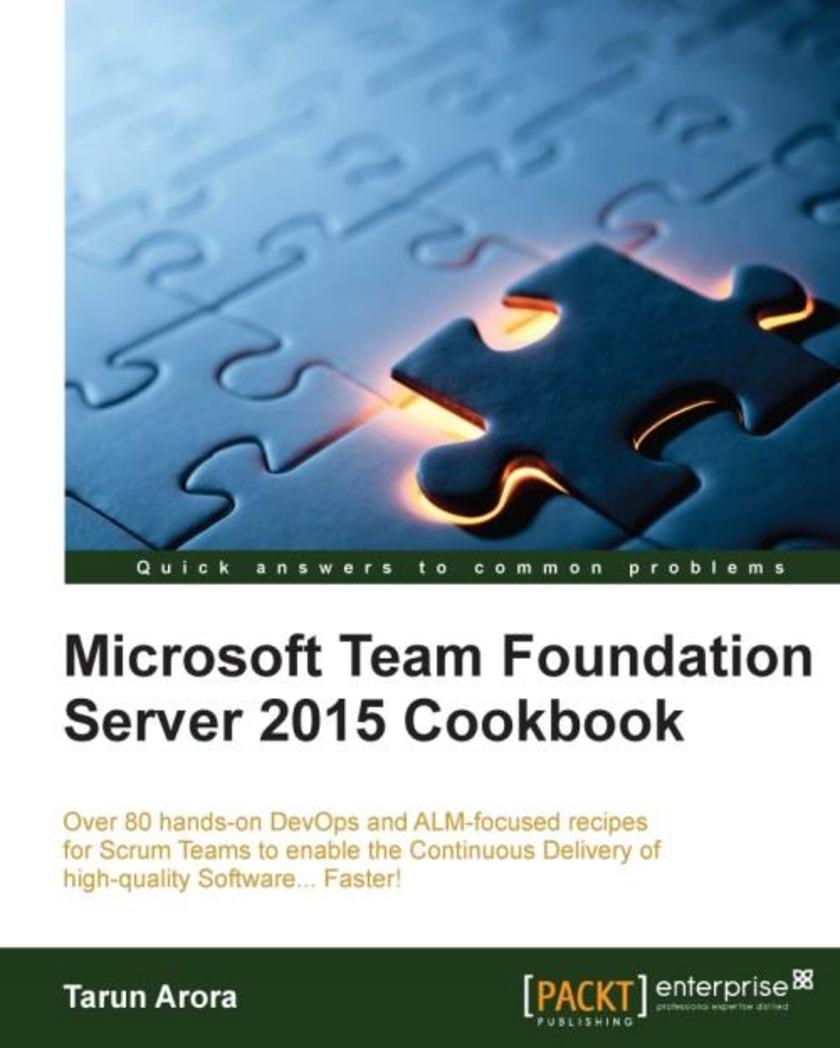
Microsoft Team Foundation Server 2015 Cookbook
¥90.46
Over 80 hands-on DevOps and ALM-focused recipes for Scrum Teams to enable the Continuous Delivery of high-quality Software... Faster!About This BookRelease high quality, reliable software quickly through building, testing, and deployment automationImprove the predictability, reliability, and availability of TFS in your organization by scheduling administration and maintenance activitiesExtend, customize, and integrate tools with TFS, enabling your teams to manage their application lifecycles effectivelyWho This Book Is ForThis book is aimed at software professionals including Developers, Testers, Architects, Configuration Analysts, and Release Managers who want to understand the capabilities of TFS to deliver better quality software faster.A working setup of TFS 2015 and some familiarity with the concepts of software life cycle management is assumed.What You Will LearnCreating a Team Project with Dashboards, Assigning License, Adding users, and Auditing AccessSetting up a Git repository in an existing TFVC-based Team ProjectSetting up branch policies and conducting Pull requests with code reviewsMapping, assigning and tracking work items shared by multiple teamsSetting up and customizing Backlogs, Kanban board, Sprint Taskboard, and dashboardsCreating a Continuous Integration, Continuous Build, and Release PipelineIntegrating SonarQube with TFBuild to manage Technical DebtTriggering Selenium Web Tests on a Selenium Test Grid using TFBuildUsing Visual Studio Team Services Cloud load testing capability with new Build frameworkExtending and customizing the capabilities of Team Foundation Server using API and Process EditorIn DetailTeam Foundation Server (TFS) allows you to manage code repositories, build processes, test infrastructure, and deploy labs. TFS supports your team, enabling you to connect, collaborate, and deliver on time. Microsoft's approach to Application Lifecycle Management (ALM) provides a flexible and agile environment that adapts to the needs of your team, removes barriers between roles, and streamlines processes.The book introduces you to creating and setting up team projects for scrum teams. You'll explore various source control repositories, branching, and merging activities, along with a demonstration of how to embed quality into every code check-in. Then, you'll discover agile project planning and management tools. Later, emphasis is given to the testing and release management features of TFS which facilitate the automation of the release pipeline in order to create potentially shippable increments.By the end of the book, you'll have learned to extend and customize TFS plugins to incorporate them into other platforms and enable teams to manage the software lifecycle effectively.Style and approachThis book is a recipe-based guide that uses a problem-solution format to call out inefficiencies in the software development lifecycle and then guides you, step-by-step, on how you can use Team Foundation Server to your advantage in those areas.
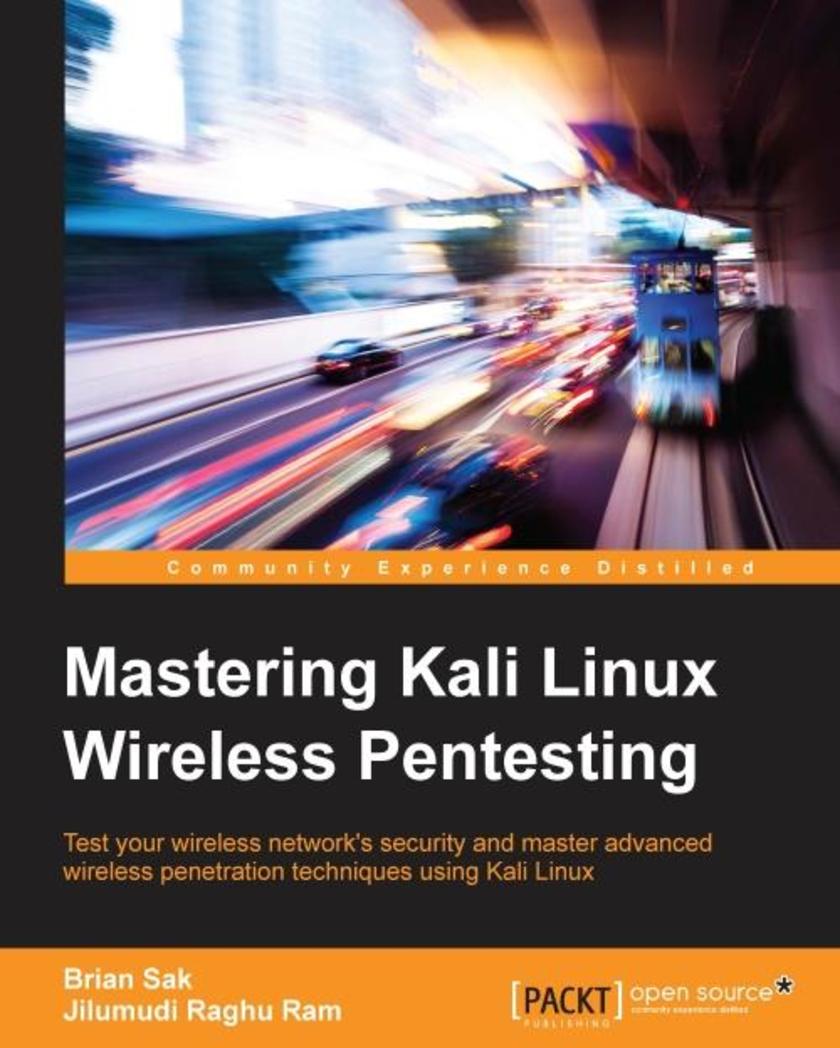
Mastering Kali Linux Wireless Pentesting
¥90.46
Test your wireless network’s security and master advanced wireless penetration techniques using Kali LinuxAbout This BookDevelop your skills using attacks such as wireless cracking, Man-in-the-Middle, and Denial of Service (DOS), as well as extracting sensitive information from wireless networksPerform advanced wireless assessment and penetration testsUse Embedded Platforms, Raspberry PI, and Android in wireless penetration testing with Kali LinuxWho This Book Is ForIf you are an intermediate-level wireless security consultant in Kali Linux and want to be the go-to person for Kali Linux wireless security in your organisation, then this is the book for you. Basic understanding of the core Kali Linux concepts is expected.What You Will LearnFingerprint wireless networks with the various tools available in Kali LinuxLearn various techniques to exploit wireless access points using CSRFCrack WPA/WPA2/WPS and crack wireless encryption using Rainbow tables more quicklyPerform man-in-the-middle attack on wireless clientsUnderstand client-side attacks, browser exploits, Java vulnerabilities, and social engineeringDevelop advanced sniffing and PCAP analysis skills to extract sensitive information such as DOC, XLS, and PDF documents from wireless networksUse Raspberry PI and OpenWrt to perform advanced wireless attacksPerform a DOS test using various techniques and toolsIn DetailKali Linux is a Debian-based Linux distribution designed for digital forensics and penetration testing. It gives access to a large collection of security-related tools for professional security testing - some of the major ones being Nmap, Aircrack-ng, Wireshark, and Metasploit.This book will take you on a journey where you will learn to master advanced tools and techniques to conduct wireless penetration testing with Kali Linux.You will begin by gaining an understanding of setting up and optimizing your penetration testing environment for wireless assessments. Then, the book will take you through a typical assessment from reconnaissance, information gathering, and scanning the network through exploitation and data extraction from your target. You will get to know various ways to compromise the wireless network using browser exploits, vulnerabilities in firmware, web-based attacks, client-side exploits, and many other hacking methods. You will also discover how to crack wireless networks with speed, perform man-in-the-middle and DOS attacks, and use Raspberry Pi and Android to expand your assessment methodology.By the end of this book, you will have mastered using Kali Linux for wireless security assessments and become a more effective penetration tester and consultant.Style and approachThis book uses a step-by-step approach using real-world attack scenarios to help you master the wireless penetration testing techniques.
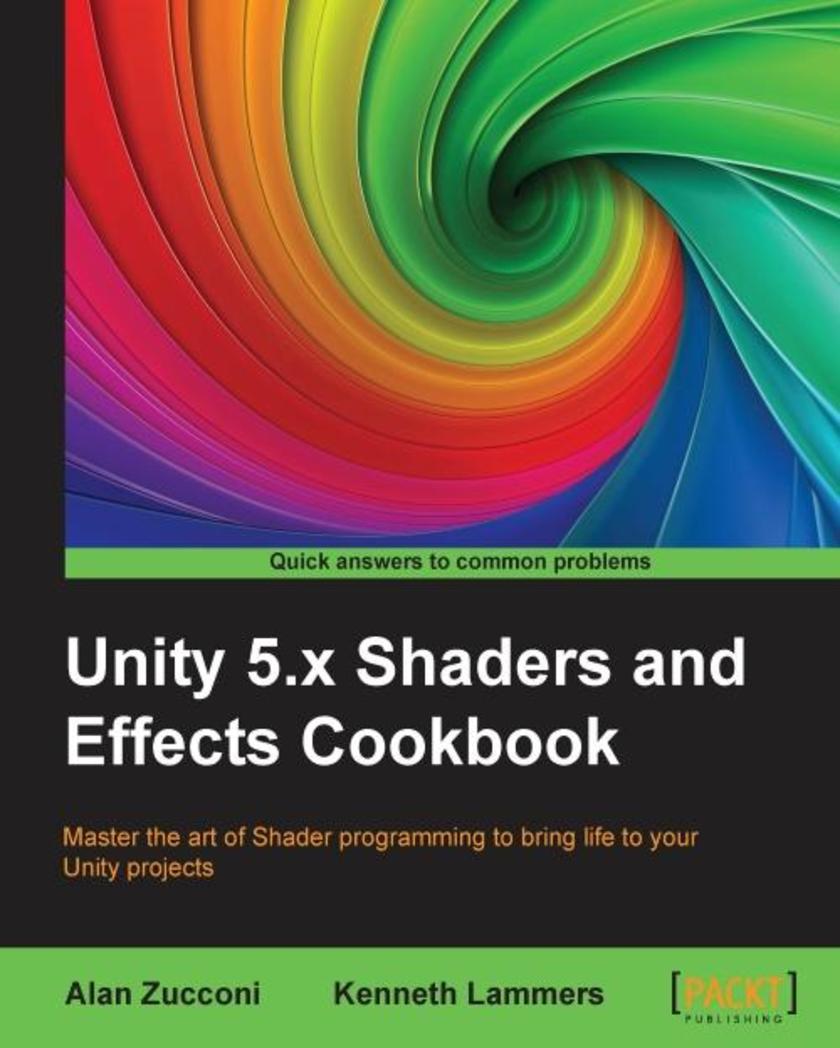
Unity 5.x Shaders and Effects Cookbook
¥90.46
Master the art of Shader programming to bring life to your Unity projectsAbout This BookThis book will help you master the technique of physically based shading in Unity 5 to add realism to your game quickly through precise recipesFrom an eminent author, this book offers you the fine technicalities of professional post-processing effects for stunning resultsThis book will help you master Shader programming through easy-to-follow examples to create stunning visual effects that can be used in 3D games and high quality graphics.Who This Book Is ForUnity Effects and Shader Cookbook is written for developers who want to create their first Shaders in Unity 5 or wish to take their game to a whole new level by adding professional post-processing effects. A solid understanding of Unity is required.What You Will LearnUnderstand physically based rendering to fit the aesthetic of your gameEnter the world of post-processing effects to make your game look visually stunningAdd life to your materials, complementing Shader programming with interactive *sDesign efficient Shaders for mobile platforms without sacrificing their realismUse state-of-the-art techniques such as volumetric explosions and fur shadingBuild your knowledge by understanding how Shader models have evolved and how you can create your ownDiscover what goes into the structure of Shaders and why lighting works the way it doesMaster the math and algorithms behind the most used lighting modelsIn DetailSince their introduction to Unity, Shaders have been notoriously difficult to understand and implement in games: complex mathematics have always stood in the way of creating your own Shaders and attaining that level of realism you crave. With Shaders, you can transform your game into a highly polished, refined product with Unity’s post-processing effects.Unity Shaders and Effects Cookbook is the first of its kind to bring you the secrets of creating Shaders for Unity3D—guiding you through the process of understanding vectors, how lighting is constructed with them, and also how textures are used to create complex effects without the heavy math.We’ll start with essential lighting and finishing up by creating stunning screen Effects just like those in high quality 3D and mobile games. You’ll discover techniques including normal mapping, image-based lighting, and how to animate your models inside a Shader. We’ll explore the secrets behind some of the most powerful techniques, such as physically based rendering! With Unity Shaders and Effects Cookbook, what seems like a dark art today will be second nature by tomorrow.Style and approachThe recipes in this book contain step-by-step instructions, complemented by screenshots and code, and real-world examples.
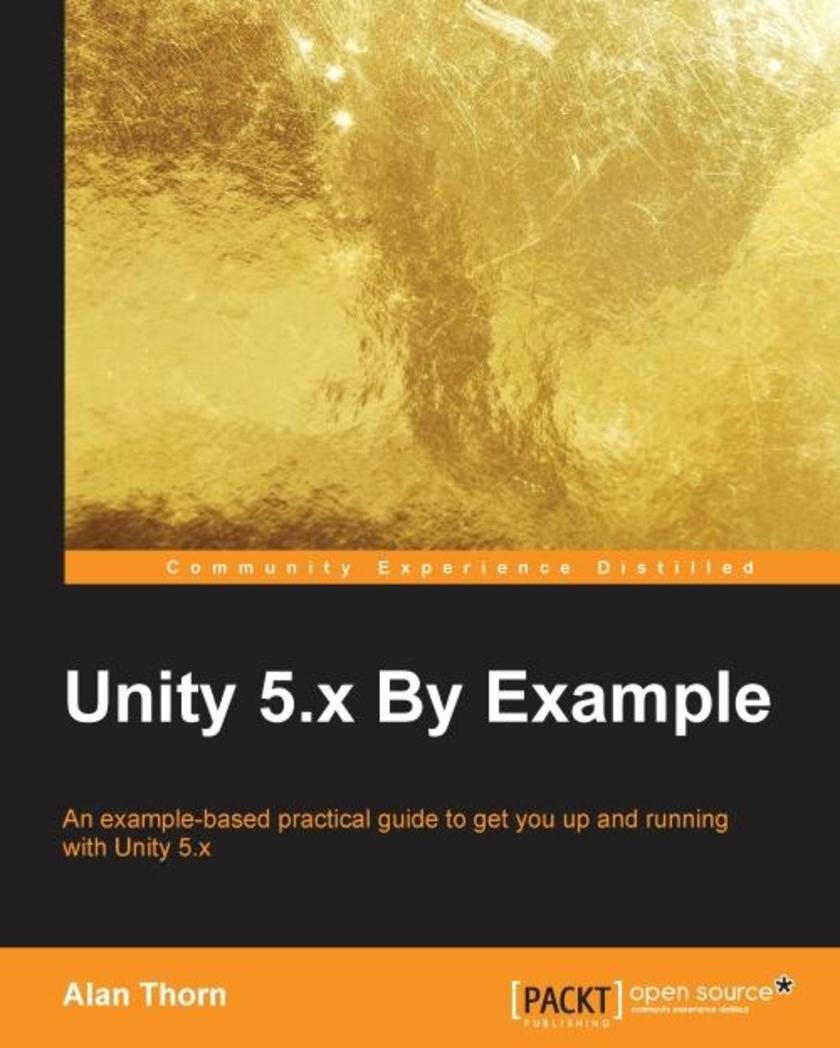
Unity 5.x By Example
¥90.46
An example-based practical guide to get you up and running with Unity 5.x About This Book The most updated resource on Unity 5.x with comprehensive discussion on all the new features of Unity 5.x Understand the core concepts surrounding Unity5 game development with this power-packed hands-on guide Brush up your existing game development skills and create games that have a brilliant gameplay using the excellent examples from this book Who This Book Is For The ideal target audience for this book would be game developers. They need not have previous experience with Unity since this book will cover all the basics about game development with unity. This would also be a very good resource for Unity developers who want to brush up their basic Unity skills and also get up and running with creating interesting games with Unity 5.x. What You Will Learn Understand core Unity concepts, such as game objects, components, and scenes Learn level design techniques for building immersive and interesting worlds Learn to make functional games with C# *ing Use the toolset creatively to build games of different themes and styles Learn to handle player controls and input functionality Dive into the process of working with terrains and world-creation tools Import custom content into Unity from third-party tools, such as Maya and Blender Get to grips with making both 2D and 3D games In Detail Unity is an exciting and popular engine in the game industry. Throughout this book, you’ll learn how to use Unity by making four fun game projects, from shooters and platformers to exploration and adventure games. Unity 5 By Example is an easy-to-follow guide for quickly learning how to use Unity in practical context, step by step, by making real-world game projects. Even if you have no previous experience of Unity, this book will help you understand the toolset in depth. You'll learn how to create a time-critical collection game, a twin-stick space shooter, a platformer, and an action-fest game with intelligent enemies. In clear and accessible prose, this book will present you with step-by-step tutorials for making four interesting games in Unity 5 and explain all the fundamental concepts along the way. Starting from the ground up and moving toward an intermediate level, this book will help you establish a strong foundation in making games with Unity 5. Style and approach This book would be a very unique resource for any game developer who wants to get up and running with Unity. The unique example based approach will take you through the most basic games towards the more complex ones and will gradually build your skill level.

Mastering Clojure
¥90.46
Understand the philosophy of the Clojure language and dive into its inner workings to unlock its advanced features, methodologies, and constructs About This Book Learn to handle data using sequences, reducers, and transducers in Clojure Explore the lesser known and more advanced features, constructs, and methodologies of the Clojure language and its ecosystem, such as asynchronous channels, actors, logic programming, and reactive programming Sharpen your Clojure skills through illustrative and comprehensive examples Who This Book Is For If you’re looking to learn more about the core libraries and dive deep into the Clojure language, then this book is ideal for you. Prior knowledge of the Clojure language is required. What You Will Learn Maximize the impact of parallelization, functional composition, and process transformation by composing reducers and transducers Process and manipulate data using sequences, reducers, and transducers in Clojure Modify and add features to the Clojure language using macros Explore the features of category theory and custom data sources for logic programming in Clojure Orchestrate parallelism and concurrency using built-in primitives as well as community libraries in Clojure Handle data with asynchronous and reactive programming methodologies and leverage it using the core.async library Test your code with unit tests, specs, and type checks to write testable code Troubleshoot and style your Clojure code to make it more maintainable In Detail Clojure is a general-purpose language from the Lisp family with an emphasis on functional programming. It has some interesting concepts and features such as immutability, gradual typing, thread-safe concurrency primitives, and macro-based metaprogramming, which makes it a great choice to create modern, performant, and scalable applications. Mastering Clojure gives you an insight into the nitty-gritty details and more advanced features of the Clojure programming language to create more scalable, maintainable, and elegant applications. You’ll start off by learning the details of sequences, concurrency primitives, and macros. Packed with a lot of examples, you’ll get a walkthrough on orchestrating concurrency and parallelism, which will help you understand Clojure reducers, and we’ll walk through composing transducers so you know about functional composition and process transformation inside out. We also explain how reducers and transducers can be used to handle data in a more performant manner. Later on, we describe how Clojure also supports other programming paradigms such as pure functional programming and logic programming. Furthermore, you’ll level up your skills by taking advantage of Clojure's powerful macro system. Parallel, asynchronous, and reactive programming techniques are also described in detail. Lastly, we’ll show you how to test and troubleshoot your code to speed up your development cycles and allow you to deploy the code faster. Style and approach This is an easy-to-follow project-based guide that throws you directly into the excitement of Clojure code. Mastering Clojure is for anyone who is interested in expanding their knowledge of language features and advanced functional programming.
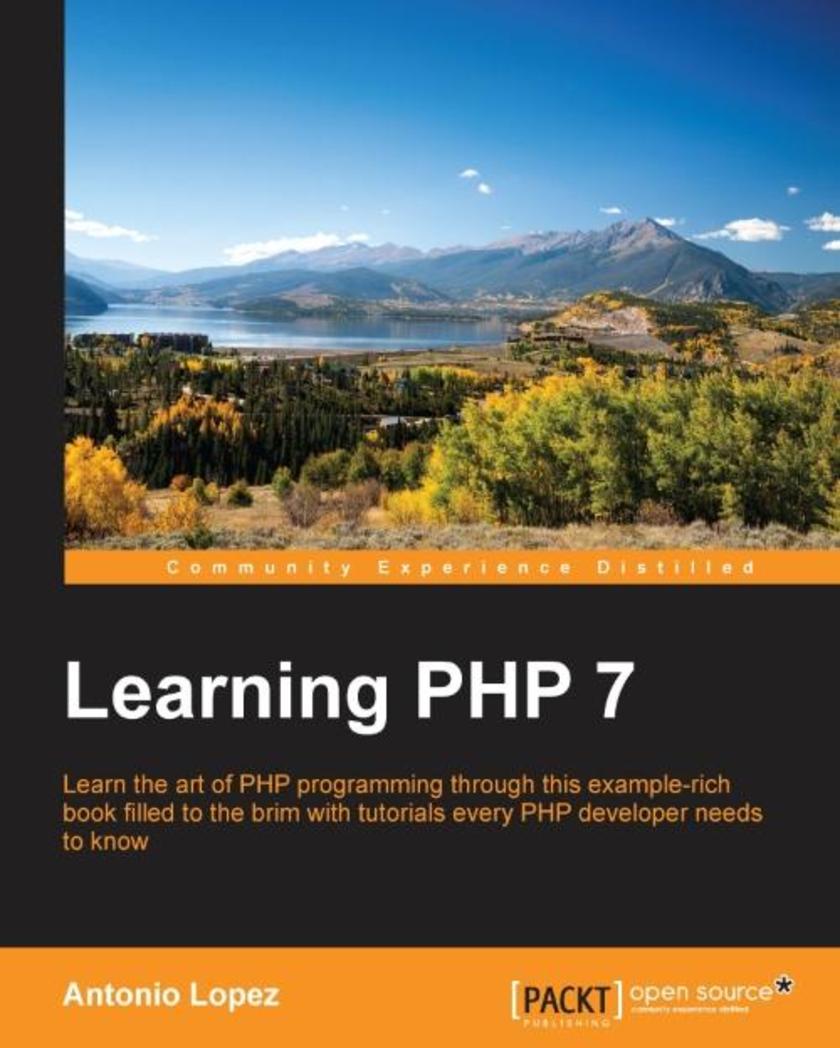
Learning PHP 7
¥90.46
Learn the art of PHP programming through this example-rich book filled to the brim with tutorials every PHP developer needs to know About This Book Set up the PHP environment and get started with web programming Leverage the potential of PHP for server-side programming, memory management, and object-oriented programming (OOP) This book is packed with real-life examples to help you implement the concepts as you learn Who This Book Is For If you are a web developer or programmer who wants to create real-life web applications using PHP 7, or a beginner who wants to get started with PHP 7 programming, this book is for you. Prior knowledge of PHP, PHP 7, or programming is not mandatory. What You Will Learn Set up a server on your machine with PHP Use PHP syntax with the built-in server to create apps Apply the OOP paradigm to PHP to write richer code Use MySQL to manage data in your web applications Create a web application from scratch using MVC Add tests to your web application and write testable code Use an existing PHP framework to build and manage your applications Build REST APIs for your PHP applications Test the behavior of web applications with Behat In Detail PHP is a great language for building web applications. It is essentially a server-side *ing language that is also used for general purpose programming. PHP 7 is the latest version with a host of new features, and it provides major backwards-compatibility breaks. This book begins with the fundamentals of PHP programming by covering the basic concepts such as variables, functions, class, and objects. You will set up PHP server on your machine and learn to read and write procedural PHP code. After getting an understanding of OOP as a paradigm, you will execute MySQL queries on your database. Moving on, you will find out how to use MVC to create applications from scratch and add tests. Then, you will build REST APIs and perform behavioral tests on your applications. By the end of the book, you will have the skills required to read and write files, debug, test, and work with MySQL. Style and approach This book begins with the basics that all PHP developers use every day and then dives deep into detailed concepts and tricks to help you speed through development. You will be able to learn the concepts by performing practical tasks and implementing them in your daily activities, all at your own pace.
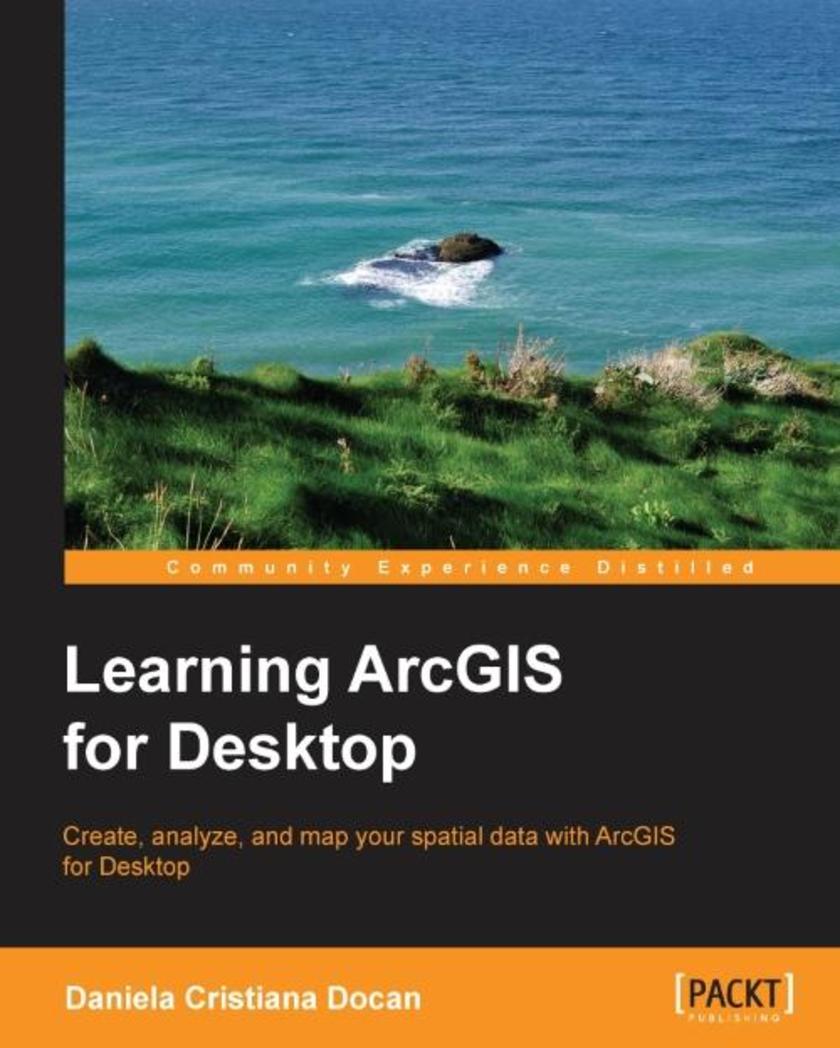
Learning ArcGIS for Desktop
¥90.46
Create, analyze, and map your spatial data with ArcGIS for Desktop About This Book Learn how to use ArcGIS for Desktop to create and manage geographic data, perform vector and raster analysis, design maps, and share your results Solve real-world problems and share your valuable results using the powerful instruments of ArcGIS for Desktop Step-by-step tutorials cover the main editing, analyzing, and mapping tools in ArcGIS for Desktop Who This Book Is For This book is ideal for those who want to learn how to use the most important component of Esri’s ArcGIS platform, ArcGIS for Desktop. It would be helpful to have a bit of familiarity with the basic concepts of GIS. Even if you have no prior GIS experience, this book will get you up and running quickly. What You Will Learn Understand the functionality of ArcGIS for Desktop applications Explore coordinate reference system concepts and work with different map projections Create, populate, and document a file geodatabase Manage, create, and edit feature shapes and attributes Built automate analysis workfl ows with ModelBuilder Apply basic principles of map design to create good-looking maps Analyze raster and three-dimensional data with the Spatial Analyst and 3D Analyst extensions In Detail ArcGIS for Desktop is one of the main components of the ESRI ArcGIS platform used to support decision making and solve real-world mapping problems. Learning ArcGIS for Desktop is a tutorial-based guide that provides a practical experience for those who are interested in start working with ArcGIS. The first five chapters cover the basic concepts of working with the File Geodatabase, as well as editing and symbolizing geospatial data. Then, the book focuses on planning and performing spatial analysis on vector and raster data using the geoprocessing and modeling tools. Finally, the basic principles of cartography design will be used to create a quality map that presents the information that resulted from the spatial analysis previously performed. To keep you learning throughout the chapters, all exercises have partial and final results stored in the dataset that accompanies the book. Finally, the book offers more than it promises by using the ArcGIS Online component in the tutorials as source of background data and for results sharing Style and approach This easy-to-follow guide is full of hands-on exercises that use open and free geospatial datasets. The basic features of the ArcGIS for Desktop are explained in a step-by-step style.
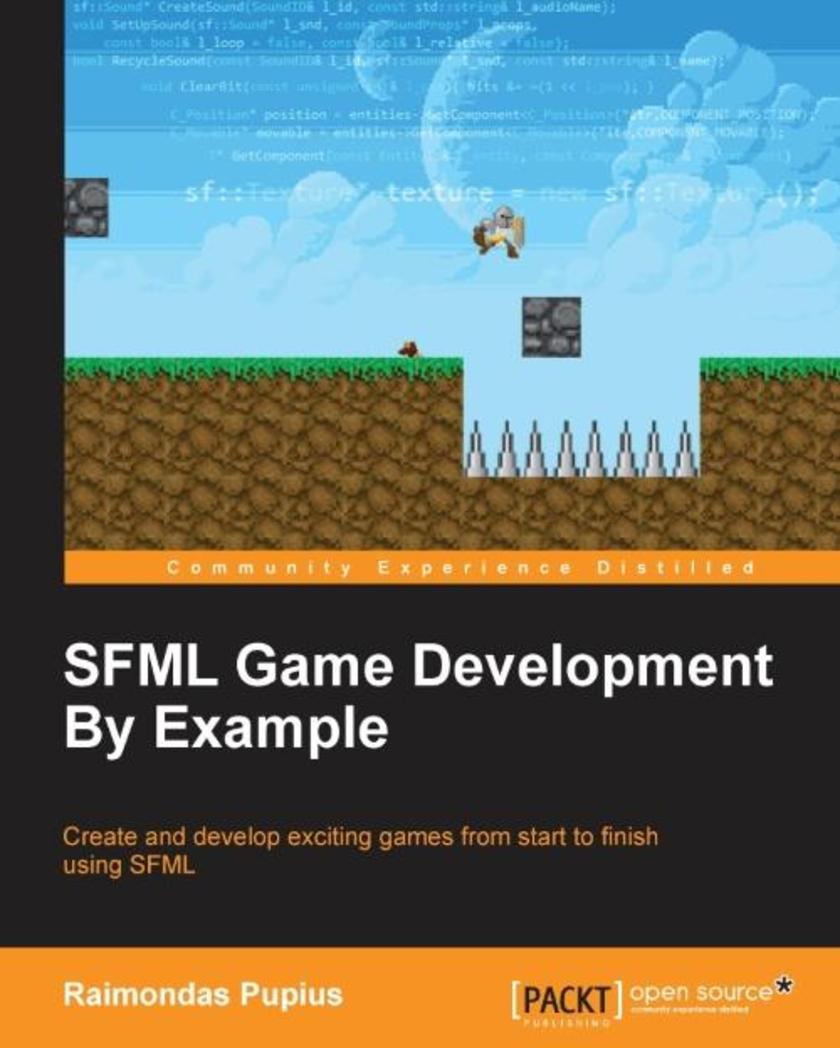
SFML Game Development By Example
¥90.46
Create and develop exciting games from start to finish using SFML About This Book Familiarize yourself with the SFML library and explore additional game development techniques Craft, shape, and improve your games with SFML and common game design elements A practical guide that will teach you how to use utilize the SFML library to build your own, fully functional applications Who This Book Is For This book is intended for game development enthusiasts with at least decent knowledge of the C++ programming language and an optional background in game design. What You Will Learn Create and open a window by using SFML Utilize, manage, and apply all of the features and properties of the SFML library Employ some basic game development techniques to make your game tick Build your own code base to make your game more robust and flexible Apply common game development and programming patterns to solve design problems Handle your visual and auditory resources properly Construct a robust system for user input and interfacing Develop and provide networking capabilities to your game< In Detail Simple and Fast Multimedia Library (SFML) is a simple interface comprising five modules, namely, the audio, graphics, network, system, and window modules, which help to develop cross-platform media applications. By utilizing the SFML library, you are provided with the ability to craft games quickly and easily, without going through an extensive learning curve. This effectively serves as a confidence booster, as well as a way to delve into the game development process itself, before having to worry about more advanced topics such as “rendering pipelines” or “shaders.” With just an investment of moderate C++ knowledge, this book will guide you all the way through the journey of game development. The book starts by building a clone of the classical snake game where you will learn how to open a window and render a basic sprite, write well-structured code to implement the design of the game, and use the AABB bounding box collision concept. The next game is a simple platformer with enemies, obstacles and a few different stages. Here, we will be creating states that will provide custom application flow and explore the most common yet often overlooked design patterns used in game development. Last but not the least, we will create a small RPG game where we will be using common game design patterns, multiple GUI. elements, advanced graphical features, and sounds and music features. We will also be implementing networking features that will allow other players to join and play together. By the end of the book, you will be an expert in using the SFML library to its full potential. Style and approach An elaborate take on the game development process in a way that compliments the reader’s existing knowledge, this book provides plenty of examples and is kind to the uninitiated. Each chapter builds upon the knowledge gained from the previous one and offers clarifications on common issues while still remaining within the scope of its own subject and retaining clarity.
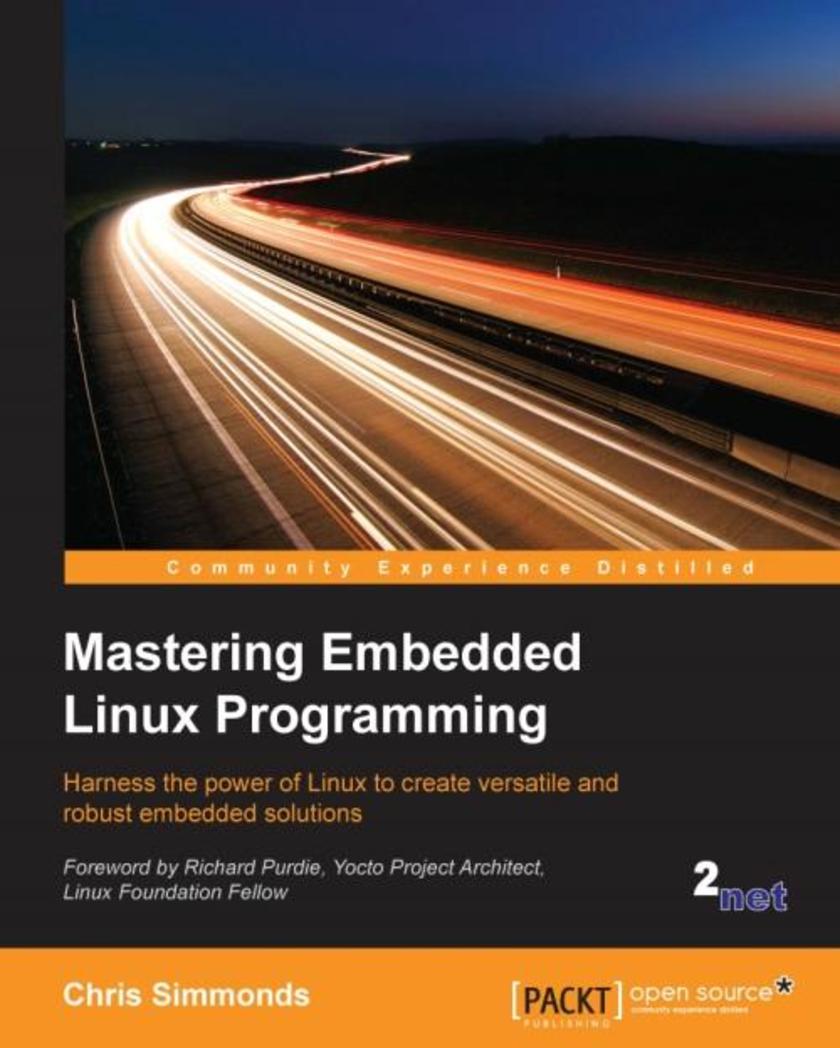
Mastering Embedded Linux Programming
¥90.46
Harness the power of Linux to create versatile and robust embedded solutions About This Book Create efficient and secure embedded devices using Linux Minimize project costs by using open source tools and programs Explore each component technology in depth, using sample implementations as a guide Who This Book Is For This book is ideal for Linux developers and system programmers who are already familiar with embedded systems and who want to know how to create best-in-class devices. A basic understanding of C programming and experience with systems programming is needed. What You Will Learn Understand the role of the Linux kernel and select an appropriate role for your application Use Buildroot and Yocto to create embedded Linux systems quickly and efficiently Create customized bootloaders using U-Boot Employ perf and ftrace to identify performance bottlenecks Understand device trees and make changes to accommodate new hardware on your device Write applications that interact with Linux device drivers Design and write multi-threaded applications using POSIX threads Measure real-time latencies and tune the Linux kernel to minimize them In Detail Mastering Embedded Linux Programming takes you through the product cycle and gives you an in-depth de*ion of the components and options that are available at each stage. You will begin by learning about toolchains, bootloaders, the Linux kernel, and how to configure a root filesystem to create a basic working device. You will then learn how to use the two most commonly used build systems, Buildroot and Yocto, to speed up and simplify the development process. Building on this solid base, the next section considers how to make best use of raw NAND/NOR flash memory and managed flash eMMC chips, including mechanisms for increasing the lifetime of the devices and to perform reliable in-field updates. Next, you need to consider what techniques are best suited to writing applications for your device. We will then see how functions are split between processes and the usage of POSIX threads, which have a big impact on the responsiveness and performance of the final device The closing sections look at the techniques available to developers for profiling and tracing applications and kernel code using perf and ftrace. Style and approach This book is an easy-to-follow and pragmatic guide consisting of an in-depth analysis of the implementation of embedded devices. Each topic has a logical approach to it; this coupled with hints and best practices helps you understand embedded Linux better.
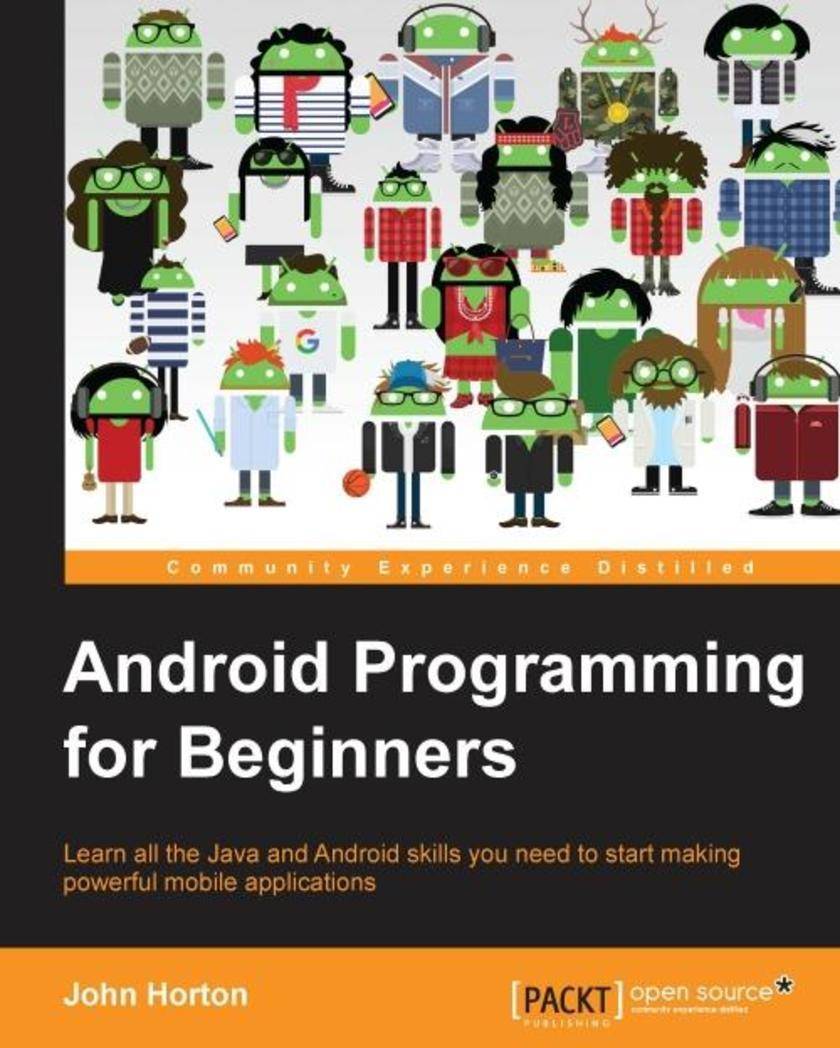
Android Programming for Beginners
¥90.46
Learn all the Java and Android skills you need to start making powerful mobile applications About This Book Kick-start your Android programming career, or just have fun publishing apps to the Google Play marketplace A first-principles introduction to Java, via Android, which means you’ll be able to start building your own applications from scratch Learn by example and build three real-world apps and over 40 mini apps throughout the book Who This Book Is For Are you trying to start a career in programming, but haven’t found the right way inDo you have a great idea for an app, but don’t know how to make it a realityOr maybe you’re just frustrated that “to learn Android, you must know java.” If so, Android Programming for Beginners is for you. You don’t need any programming experience to follow along with this book, just a computer and a sense of adventure. What You Will Learn Master the fundamentals of coding Java for Android Install and set up your Android development environment Build functional user interfaces with the Android Studio visual designer Add user interaction, data captures, sound, and animation to your apps Manage your apps’ data using the built-in Android SQLite database Find out about the design patterns used by professionals to make top-grade applications Build, deploy, and publish real Android applications to the Google Play marketplace In Detail Android is the most popular OS in the world. There are millions of devices accessing tens of thousands of applications. It is many people's entry point into the world of technology; it is an operating system for everyone. Despite this, the entry-fee to actually make Android applications is usually a computer science degree, or five years’ worth of Java experience. Android Programming for Beginners will be your companion to create Android applications from scratch—whether you’re looking to start your programming career, make an application for work, be reintroduced to mobile development, or are just looking to program for fun. We will introduce you to all the fundamental concepts of programming in an Android context, from the Java basics to working with the Android API. All examples are created from within Android Studio, the official Android development environment that helps supercharge your application development process. After this crash-course, we’ll dive deeper into Android programming and you’ll learn how to create applications with a professional-standard UI through fragments, make location-aware apps with Google Maps integration, and store your user’s data with SQLite. In addition, you’ll see how to make your apps multilingual, capture images from a device’s camera, and work with graphics, sound, and animations too. By the end of this book, you’ll be ready to start building your own custom applications in Android and Java. Style and approach With more than 40 mini apps to code and run, Android Programming for Beginners is a hands-on guide to learning Android and Java. Each example application demonstrates a different aspect of Android programming. Alongside these mini apps, we push your abilities by building three larger applications to demonstrate Android application development in context.
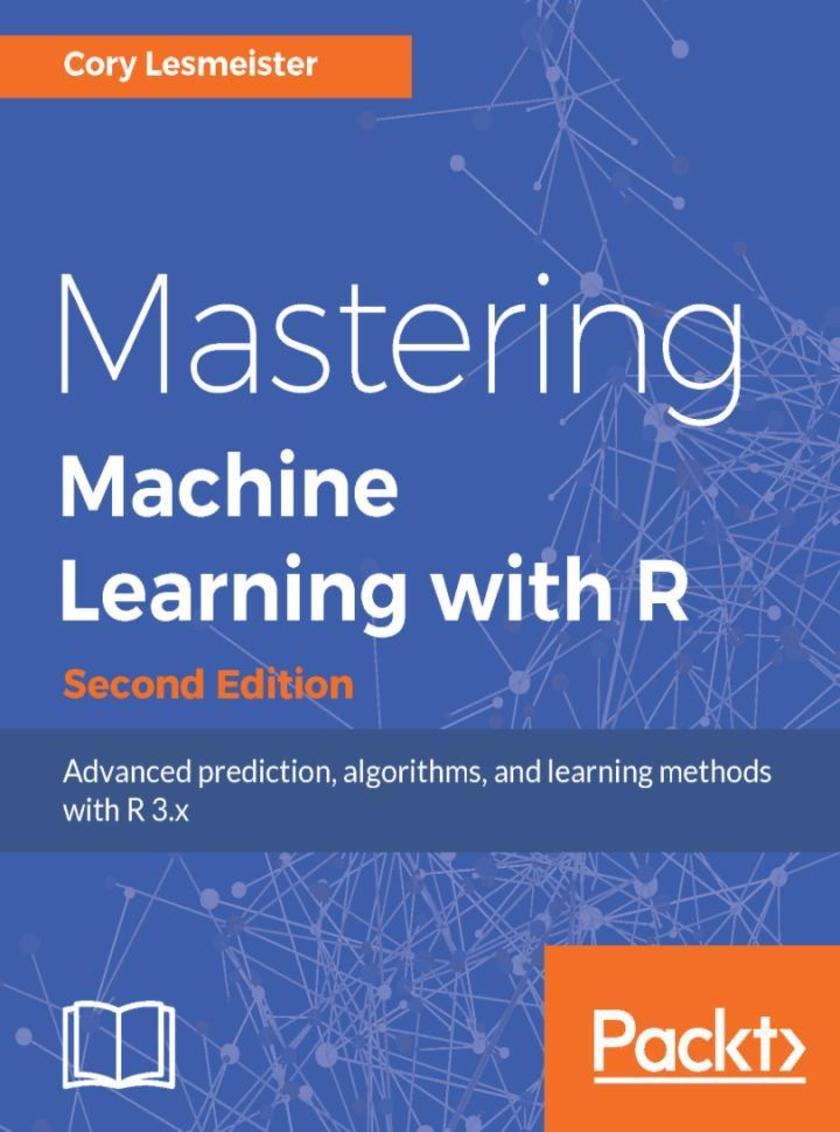
Mastering Machine Learning with R - Second Edition
¥90.46
This book will teach you advanced techniques in machine learning with the latest code in R 3.3.2. You will delve into statistical learning theory and supervised learning; design efficient algorithms; learn about creating Recommendation Engines; use multi-class classification and deep learning; and more. You will explore, in depth, topics such as data mining, classification, clustering, regression, predictive modeling, anomaly detection, boosted trees with XGBOOST, and more. More than just knowing the outcome, you'll understand how these concepts work and what they do. With a slow learning curve on topics such as neural networks, you will explore deep learning, and more. By the end of this book, you will be able to perform machine learning with R in the cloud using AWS in various scenarios with different datasets. What you will learn ?Gain deep insights into the application of machine learning tools in the industry ?Manipulate data in R efficiently to prepare it for analysis ?Master the skill of recognizing techniques for effective visualization of data ?Understand why and how to create test and training data sets for analysis ?Master fundamental learning methods such as linear and logistic regression ?Comprehend advanced learning methods such as support vector




 购物车
购物车 个人中心
个人中心



